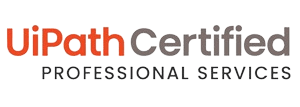Best Web Crawler
10x Faster
With AI
Best Web Crawler
10x Faster With AI


AI-Driven Data Extraction
Real-time Data Updates
Seamless Data Integration
High-Level Accuracy
Anti-Blocking Mechanisms
Customizable Extraction Rules
NO SET-UP COST
NO INFRA COST
NO CODING
4X
Rapid increase of your wealth
30%
Decrease your expenses wisely
1M+
Trusted regular active users
USED BY



Harness AI for Seamless Data Navigation with Outsource BigData’s Best Web Crawler
In the dynamic and ever-expanding world of the internet, the site crawler, often referred to as a spider or bot, plays an indispensable role. They are the silent architects, tirelessly navigating the World Wide Web to collect, organize, and index information. At the heart of search engines, these automated agents ensure that the wealth of online data is not only accessible but also systematically arranged for a flawless exploration.
Outsouce BigData’s AI-driven best web crawler is poised to redefine your approach to data gathering, offering a sophisticated and reliable means to navigate the complexities of the digital terrain. As businesses and individuals alike seek to harness the immense potential of the internet, the need for a powerful, adaptive, and ethically sound web crawling solution becomes paramount. Outsource BigData stands at the forefront of meeting this need, providing a free web crawler designed to not only meet but exceed the expectations of modern data retrieval.
Join us on this transformative journey where the convergence of data and technology unlocks a new era of web crawling excellence. Embrace the future of information retrieval, where precision meets innovation, and let Outsource BigData be your gateway to a seamless and powerful web crawling experience.
What is a Web Crawler?
A web crawler also known as a spider or search engine bot is enabled to download and index content from various sources of the Internet. The primary objective of these bots is to comprehend the subject matter of (virtually) every webpage on the internet, facilitating the retrieval of information as required. The term “web crawlers” is used because crawling is the technical term for the automated process of accessing a website and extracting data through a software program.
Working of a Web Crawler
Web crawling is a continuous process that discovers new pages, indexes them, and stores the gathered information for future reference.

Discovering and Fetching Pages
The web crawler navigates through links on online sites to gather information. It starts from a known URL and searches for new sites through the links found. The crawl frontier is a set of links visited based on crawling rules. The site crawler assesses the number of URLs linking to a page and frequency of visits to uncover significant content. Hence, making it crucial for search engines to recognize and index it.
Rinse and Repeat
The top web crawler indexes and downloads site information, expanding the crawl frontier and contributing to search engine data expansion. Spider bots organize indexes, allowing information to be retrieved and ranked in search results.
Rendering, Downloading, and Indexing Pages
A crawler bot identifies a new page, gathers information, downloads it, and indexes it. Some have access to public pages, while others can index authenticated ones. They follow the rules set by robots.txt files and the noindex meta tag.
Types of Web Crawlers
1. General-Purpose Crawlers: These crawlers, such as Googlebot, traverse the entire web, indexing a wide range of content. They are fundamental to search engines, ensuring comprehensive coverage.
2. Focused Crawlers: Tailored for specific content types or themes, focused crawlers delve deeply into particular domains or topics. They are efficient for targeted data retrieval.
3. Incremental Crawlers: These crawlers identify and retrieve only the new or updated content by revisiting pages. Incremental crawlers optimize resources by avoiding redundant data collection.
4. Distributed Crawlers: Operating across multiple servers or locations, distributed crawlers enhance scalability and speed. They are effective for handling large volumes of data.
5. Vertical Crawlers: Specialized in a specific industry or vertical, these crawlers target content relevant to a particular sector. Examples include crawlers focused on finance, healthcare, or technology.
6. Deep Web Crawlers: Designed to access and retrieve information from the deep web, which includes databases and dynamic content, not indexed by traditional search engines.
7. Mobile Crawlers: Tailored for mobile content, this web crawler focuses on indexing pages optimized for mobile devices. As a result, search engines deliver mobile-friendly results.
8. News Crawlers: Specialized in gathering and indexing news articles from various sources,. these crawlers prioritize timely and relevant information.
9. Image and Video Crawlers: These crawlers focus on multimedia content, indexing images and videos across the web. They play a crucial role in visual search and content categorization.
10. Social Media Crawlers: Targeting content on social media platforms, these crawlers index posts, profiles, and media shared on platforms like Facebook, Twitter, and Instagram.
Understanding the diverse capabilities of these web crawlers is essential for selecting the best web crawler to meet specific data retrieval needs. Each type caters to different requirements, providing a nuanced approach to web exploration and information gathering.
Preferred Partner for High Growth Company - Scrape Data Easily Without Coding
Scraping data from websites no longer requires coding expertise. With AI-driven web scraping tools, you can effortlessly extract valuable information from the web. Our AI data scraper offers can easy-to-use interface for all users.

Benefits of Using a Site Crawler
Web crawler plays a crucial role in assisting SEO experts throughout various stages of optimizing and testing website usability. Here’s a breakdown of how they contribute:
1. Keyword Research, Meta Tags, and Content Optimization:
SEO experts comprehend search engine crawler algorithms and content, optimizing keywords in headings, metadata, and sentences for improved rankings. They also use meta tags and code that communicates a web page’s main ideas to web crawlers, providing crucial information like the page title in search results.
2. Anchor Linking:
SEO professionals use backlinks, internal links, and URLs to optimize the best web crawler discovery. Anchor text with relevant keywords enhances effectiveness. Analyzing server logs provide insights into robot interaction, frequent page visits, and errors for improved search results.
3. Sitemap Submission:
Submitting sitemaps to search engines supports SEO efforts, as sitemaps list pages to be crawled. This allows the site crawler to swiftly discover content deep within the website, resulting in faster and optimized search results.
4. Social Media Optimization:
Analyzing social media logs aids SEO professionals in optimizing keywords, hashtags, and links for enhanced search results.
5. Directory and Individual Page Submissions:
Directly submitting new content or updates to search engines through their interfaces is a valuable SEO practice. This ensures that search engines promptly notice updates and keep their databases current.
6. Automating Website Maintenance and Optimization Tasks:
Using site crawler tools, SEO experts can check links, track HTML code behavior, and validate code changes, simplifying the process of assessing the health of websites. These tools can also be employed to extract and manage email addresses, helping control spam.
In summary, web crawler is integral to the SEO toolkit, enabling professionals to fine-tune websites for optimal performance and visibility across search engines.
Web Crawling Vs. Web Scraping
The main distinction between crawling and scraping lies in their purposes: crawling is about organizing data for indexing, while scraping is about extracting data.
When we talk about web scraping, also known as web harvesting, it’s usually a more focused process than crawling. It can be done on both a small and large scale, aiming to extract specific data and content from websites. People use web scraping for activities like market research, lead generation, or testing a website. Although web crawling and scraping are sometimes used interchangeably, they serve different functions.
Unlike web crawlers, which follow rules like adhering to robots.txt files and URL frontier policies, web scrapers might act without permissions. They could download content illegally and not consider the strain they might put on servers.

Challenges Faced by a Free Web Crawler
The web crawler faces the challenge of managing the constantly updated and massive amount of data generated. Therefore, making it nearly impossible for crawlers to discover all created links.

1. Regular Content Updates
Companies frequently update content on their pages for search engine optimization strategies. This is done by using dynamic web pages that adjust based on visitor engagement. This necessitates frequent page revisits for indexing.
2. Crawler Traps
Websites use crawler traps to prevent spider bots from accessing specific pages. But these can confuse the crawler, leading to a repetitive cycle and wasting resources.
3. Bandwidth Strain
Downloading and indexing a large number of pages can put a strain on network capacity. Web crawlers consume a significant amount of bandwidth, impacting network performance.
4. Duplicate Content
Duplicate content, either due to machine or human error, can cause inaccurate indexing. As a result, crawlers find it challenging to prioritize, which becomes counterproductive for businesses.
In simpler terms, web crawling faces hurdles in keeping up with constantly changing content. This leads to avoiding traps intentionally set by some websites, managing network resources, and handling duplicate content accurately.
Future of Web Crawler
1. Advanced AI and Machine Learning Integration: Expect the best web crawler to increasingly leverage advanced AI and machine learning algorithms. This leads to improved contextual understanding of content. This results in more accurate indexing and relevant search results.
2. Mobile-First Indexing: With the continued rise in mobile usage, web crawlers are likely to prioritize mobile versions of websites for indexing. Hence, reflecting the growing importance of mobile-friendly content.
3. Real-Time Indexing: Future web crawlers may move towards real-time indexing to provide more up-to-date search results, especially crucial for rapidly changing content like news and social media updates.
4. Improved Handling of JavaScript and Dynamic Content: As websites incorporate more dynamic content and JavaScript frameworks, web crawlers will likely become more adept at crawling and indexing such content. This ensures accurate representation in search results.
5. Focus on Privacy and Ethical Crawling: web crawlers can place a greater emphasis on ethical crawling practices, respecting user preferences, and adhering to privacy regulations to address growing concerns about online privacy.

Our Technology Partners






Preferred Partner for High Growth Company
Our 12+ years of experience in price scraping and adaption of the latest algorithms such as Artificial Intelligence, Machine Learning and deep learning for catering the needs of retailers makes us the preferred partner for a high growth company.
%
Customer satisfaction
Years Of Experience
Projects Delivered
Happy Clients & Growing
Quality, Security and Privacy Compliance




